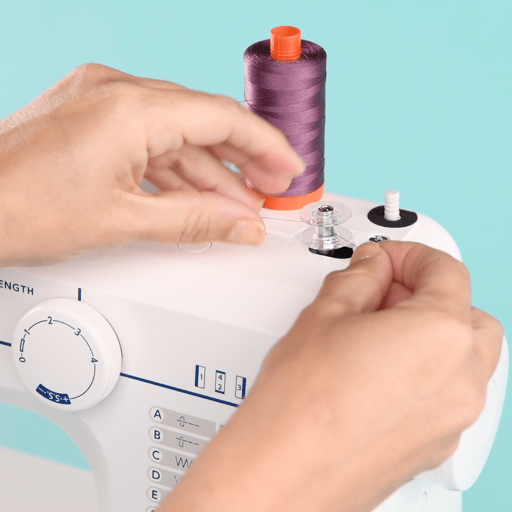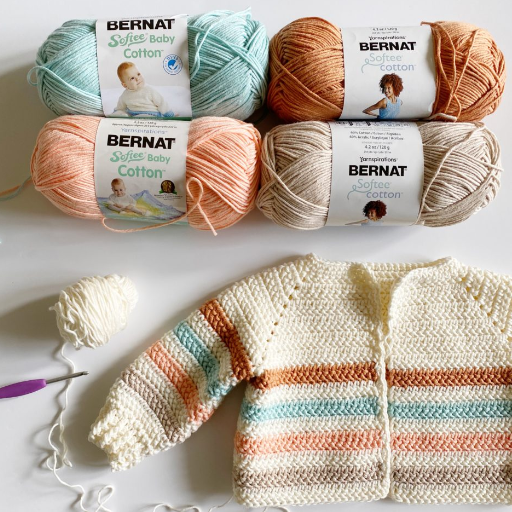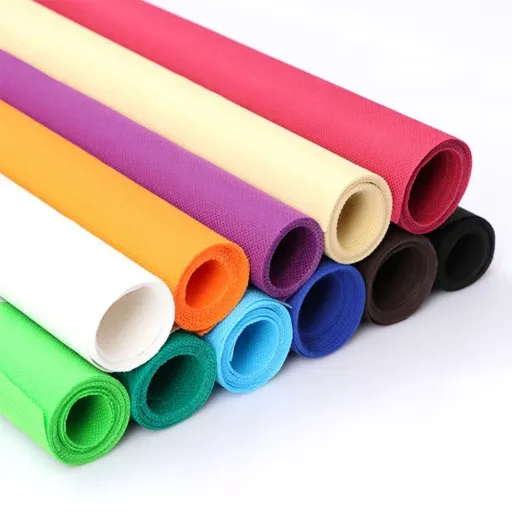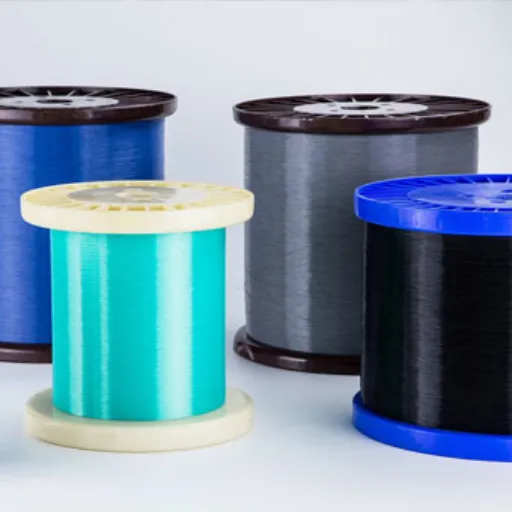The fibers of polyester must be regarded among nature’s most adaptable and highly utilized substances of the modern world, bringing industries from fashion to home furnishings and beyond in its wake. This synthetic fiber, renowned for its strength, cheapness, and adaptability, changed the framework of how we interact with textiles. So what exactly makes polyester fiber so paramount, or maybe even the most dominant player in the global market? This blog examines some of the significant developments that contributed to the rise of polyester, including its distinctive properties, manufacturing process, and environmental implications. For the curious consumer, textile enthusiast, or industry professional, this article will open up some doors regarding polyester fiber and its effects on our everyday life. Join us as we unravel the intricacies of this extraordinary fiber and explore its significance in our fast-paced world.
Understanding Polyester Fiber

Polyester fiber is a synthetic substance manufactured from petroleum-based products. The process of polymerization, linked with polycondensation, joins ethylene glycol with terephthalic acid to yield polyethylene terephthalate (PET), a substance recognized as a primary polyester. Among other things, polyester has found extensive use in garments, home furnishings, and industrial applications due to its durability, strength, wrinkle resistance, and resistance to shrinkage. The fiber has a strong inclination to retain its shape and another to dry quickly, making it highly desirable in both fashion and function.
Types of Polyester and Their Applications
Here is a concise table summarizing the types of polyester and their applications based on the latest information:
| Type of Polyester | Key Characteristics | Applications |
|---|---|---|
| Polyethylene Terephthalate (PET) | Durable, strong, and versatile | Clothing, bottles, home textiles, and industrial uses |
| Plant-Based Polyester | Biodegradable, eco-friendly | Sustainable textiles, niche eco-products |
| PCDT Polyester | Elastic, resilient, heavy-duty | Upholstery, curtains, industrial fabrics |
| Polybutylene Terephthalate (PBT) | High resilience, antistatic, dyeable | Carpets, industrial textiles, automotive parts |
| Polytrimethylene Terephthalate (PTT) | Wrinkle-resistant, stain-resistant, durable | Apparel, home furnishings, technical textiles |
Mechanical Properties of Polyester Fiber
The mechanical properties of polyester fibers vary, giving it the ultimate multi-use functionality. A material with high tensile strength can withstand very high stresses and strains without failure. Therefore, industrial materials, such as ropes, conveyor belts, and technical fabrics, can significantly benefit from this property. Because these fibers have excellent resilience, they can resist bending and return to their original shape after deformation, resulting in no wrinkles in their clothes.
Another parameter that polyester fibers possess is low moisture absorption. This brings quick drying, and they also perform well under humid conditions in terms of durability. Furthermore, it possesses a high modulus, allowing it to maintain its shape under tension with minimal stretching. Additionally, it offers excellent abrasion resistance, providing the end-user with immediate benefits in terms of wear resistance through repeated use or mechanical abrasion. These properties together make polyester fibers well-suited for use in apparel and heavy-duty industrial products.
The Journey of Polyester: From Production to Use
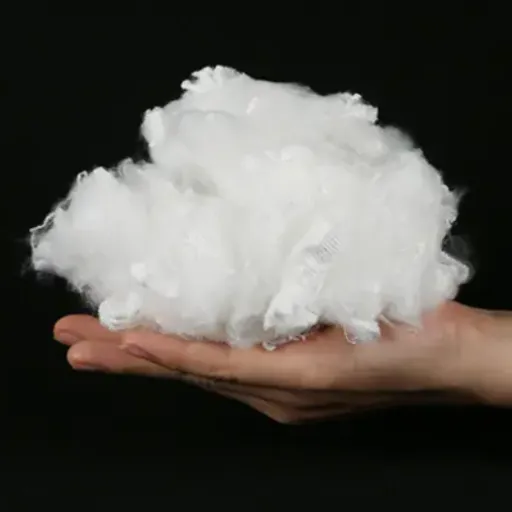
The entire polyester production process begins with polymerization, where raw materials, such as petroleum byproducts, are converted to form polyethylene terephthalate (PET), the primary component in the production of polyester fiber. This PET material is melted, spun into yarns, and stretched to add strength and elasticity. After the fibers are formed, they are woven or knitted into fabrics designed for various uses. The versatility of properties makes this fabric highly useful, as it can be used in a range of applications, from apparel to upholstery to industrial uses: polyester is durable, moisture-resistant, and easy to clean. From cradle to grave, one particular material, polyester, continues to serve in both consumer and industrial applications, meeting every need.
History of Polyester Fiber Production
Polyester production dates back to the mid-20th century. The first polyester fiber, known as Terylene, was produced in the early 1940s by two British chemists, John Rex Whinfield and James Tennant Dickson, from the Calico Printers’ Association. Building upon earlier research, they successfully manufactured polyethylene terephthalate (PET), a polymer serving as the parent to modern polyester. Shortly afterward, the rights to produce polyester were sold to the DuPont company in the United States. In 1951, DuPont introduced Dacron, thereby popularizing its name.
During the next few decades, polymer chemistry and processing methods underwent a relatively rapid evolution, extending the reach of polyester. It became less expensive to produce, yet improvements were made to its hand, durability, and ability to be customized for various uses. Currently, polyester is the textile that accounts for more than 50% of all fibers worldwide. Other methods for reducing its environmental footprint, while responding to industrial and consumer-driven needs, are in place, including the use of recycled polyester and bio-based production.
Polyester Fabric in Modern Textiles
The polyester fabric has been an enduring classic due to its unparalleled technical versatility and adaptability in modern textiles. It is used in clothing, activewear, home furnishing, and heavy industrial uses. Its durability, resistance to wrinkling, and retention of shape make it an all-time favorite among industries. Today, what brands polyester with uniqueness is the sustainable approach toward production. Recycled polyester maximizes the use of PET plastic bottles, thereby reducing waste and providing an environmentally friendly alternative to virgin polyester. Additionally, bio-based polyester holds enormous potential to reduce dependence on fossil fuels, marking a significant step toward more sustainable textile production. These developments demonstrate how polyester continues to advance and evolve to meet today’s functional and global sustainability requirements.
Dyeing Techniques for Polyester Fiber
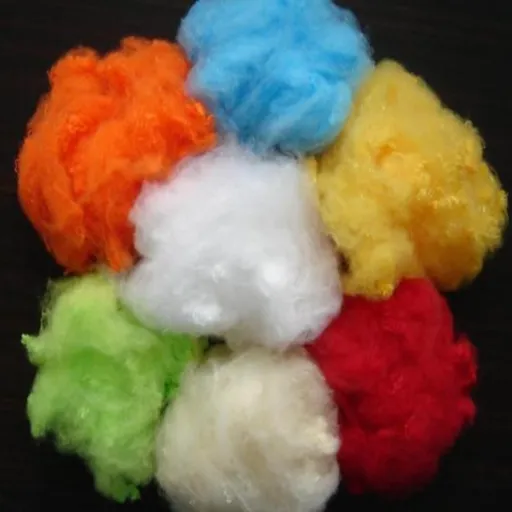
-
Disperse Dyeing
This is the most common method for dyeing polyester. Disperse dyes are non-ionic and are particularly adapted to synthetic fibers. They require high temperatures to penetrate the tightly packed structure of polyesters.
-
High-Temperature Dyeing
Due to the high temperature and pressure, polyester is typically dyed at a temperature of approximately 266°F (130°C) with the aid of an autoclave or pressure dyeing machine. High pressure ensures that colors are deeper and more uniform in their absorption.
-
Carrier Dyeing
For the lower-temperature dyeing of polyester, dye molecules are made to enter the fiber with the help of chemicals referred to as carriers. The process is quite helpful, though it causes environmental pollution.
-
Solution Dyeing
Also known as dyeing with pigments, this process involves adding pigments to the fiber solution before spinning, resulting in a durable and colorfast colored fiber with limited flexibility in color variations.
-
Transfer Printing
Transfer printing is an environmentally friendly dyeing method that transfers dyes from paper to polyester fabric through the use of heat and pressure. It is ideal for intricate designs and patterns, making it perfect for fashion and home textiles.
Challenges in Dyeing Polyester Fabric
The notable impediments in dyeing polyester fabrics are essentially due to the fiber being synthetic. Polyester is hydrophobic and water-repellent, thus preventing the penetration of water-based dyes. Therefore, dyeing must be performed at very high temperatures (around 280°F or 140°C), with carriers or dispersants aiding the transfer of dyes. This adds to the consumption of energy, further hindering the ecological friendliness of the process.
Additionally, polyester does not accept many dyes, primarily reactive or acid dyes; therefore, disperse dyes must be used exclusively. In this manner, design flexibility can be reduced, and the price may increase. Another significant concern is the color fastness of the product under normal use conditions, particularly during exposure to UV and washing, which can cause dyes to degrade over time.
Then came advanced machinery, chemical effluents, and legal issues related to environmental concerns and economics, making the dyeing of polyester so challenging, whether on an industrial or domestic scale, that it was difficult to do efficiently.
Innovations in Dyeing Processes
One of the most remarkable recent developments has been in the field of waterless dyeing technologies, one being that of supercritical carbon dioxide dyeing. Waterless means that no water is required in the process, unlike conventional dyeing processes, which involve significant water consumption and chemical runoff.
In addition, advances in digital textile printing enable dyes to be precisely placed, reducing waste and allowing for more intricate designs with a lower environmental impact. Bio-based dyes, from algae to food waste, are also rapidly developing as an environmentally friendlier alternative to synthetic dyes, thereby reducing dependence on petrochemicals.
These innovations aim to address the currently pressing environmental and economic challenges in the polyester dyeing industry, thereby enriching the path to more sustainable methods of operation.
Polyester vs. Other Synthetic Fibers
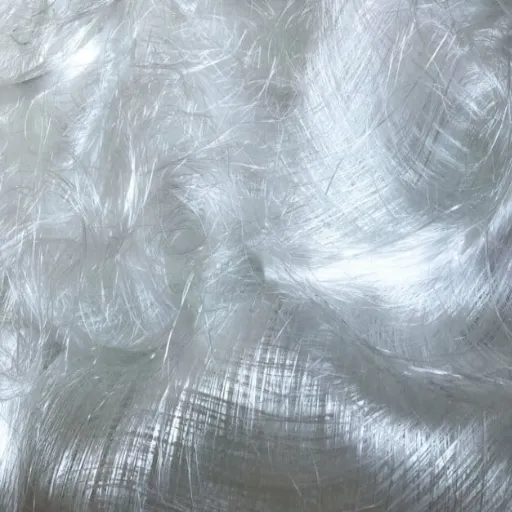
Opposing the line of an array of synthetic fibers lie the attributes of durability, low cost, and versatility bestowed upon polyester. Stretching, shrinking, and wrinkling are all common issues associated with nylon usage, whereas polyester fibers offer greater resistance, making them suitable for a broader range of applications. Polyester is primarily used in sports and outdoor wear because it wicks moisture away more effectively than acrylics. Additionally, since the production cost of polyester is lower than that of other synthetic fibers, this is one reason for its widespread use. Of course, the environment has concerns with each synthetic fiber today; however, polyester has become more sustainable than before, thanks to advances in recycling technology, particularly the recycling of PET materials.
Advantages of Polyester over Other Fibers
A combination of beauty, durability, cost, and versatility makes polyester very popular. The top advantages include excellent resistance to stretch and shrinkage, so the garments retain their shape even after repeated washes. They are also highly shrink-resistant and retain the shape of garments after washing.
The fabric is therefore highly wrinkle-resistant and suitable for travel clothing and workwear. It’s because of their lightness and quick-drying nature that polyester fabrics are chosen for outdoor and active clothing, especially in situations where moisture management is paramount.
By improving its appeal in terms of specific environmental aspects, recycled polyester made from PET bottles has made significant improvements on both the functional and sustainable fronts.
Choosing the Right Synthetic Fiber for Your Needs
My thought process in choosing the right synthetic fiber is based on the qualities it must possess in relation to its actual use. For example, if I want something durable with stretch, I consider nylon or spandex; polyester is my choice for moisture-wicking and quick-drying features. Sustainability-wise, I try to go for fibers made from recycled materials whenever possible.
Future Trends in Polyester Fiber

Sustainability and technological innovation, which are at the forefront of polyester fiber’s future, are driving the rise of recycled polyester, primarily collected from plastic waste, thereby reducing environmental footprints. There is a push to develop the bikini source from bio-based polyester, which aims to replace petroleum-based alternatives. In another direction, advanced manufacturing methods are enhancing the characteristics of fiber, including durability, softness, and versatility, thereby meeting the evolving needs of consumers. These key areas will shape a greener and better polyester fiber industry.
Sustainable Practices in Polyester Production
Polyester sustainability presents a host of challenges, but to decrease environmental harm and ensure fiber functionality, several,” some more,” options may be considered: recycling post-consumer plastic bottles into polyester yarns is one of the best methods through which waste could be disposed of in landfills and oceans. Other energy-efficient production methods could be considered, such as utilizing renewable energy sources and optimizing manufacturing processes to minimize carbon footprints. Furthermore, bio-based polyesters—namely those derived from natural resources such as sugarcane or corn—are becoming viable alternatives to conventional petroleum-based fibers. These new and creative directions are thus carving a path for an embrace of a more sustainable polyester fiber industry.
The Role of Polyester in Eco-Friendly Fabrics
Environmental Impact Statistics
- 54% of global fiber production is polyester
- 30% reduction in greenhouse gas emissions with eco-friendly production
- Significant waste reduction through PET bottle recycling
Sustainable Innovations
- Waterless dyeing processes
- Biodegradable polyester development
- Energy-efficient production methods
Polyester plays a significant role in creating eco-friendly fabrics due to its versatility and advancements in recycling technologies. Considering the global production of fiber, 54% is polyester, making it paramount that efforts be made towards sustainability in the textile industry. Polyester plays a significant role in waste reduction, with recycled polyester often being made from post-consumer PET bottles, which also require less energy compared to the production of virgin polyester. Studies show that the environmentally friendly production of polyester results in a reduction of about 30% in greenhouse gas emissions. Other practices that can be undertaken, including but not limited to waterless dyeing processes and the realization of future trends with biodegradable polyesters, serve as influential alternatives for the industry to continue forming a positive mindset by embracing environmental sustainability.
Reference Sources
These five sources are among the most professional and authoritative references to verify the validity of your article on polyester fiber. These are academic and thoroughly researched subjects:
Polyester Fibers
A comprehensive study on the production, properties, and applications of polyester fibers is presented in this article on ScienceDirect.
Polyester Fibers (Wiley Online Library)
This source provides an overview of the definitions, characteristics, and commercial applications of polyester fibers, including poly(ethylene terephthalate).
Polyester: Production, Characterization, and Innovative Applications
Explores the processes of manufacturing, the novel applications, and the comparative studies of polyester fibers with other materials.
Polyester: A Cultural History
Taylor & Francis considers the culture and history of polyester fiber in contemporary society.
Ionomeric Polyester Fiber
The article presented discusses specialized polyester fibers, such as cationic dyeable polyester, and their unique properties.
Frequently Asked Questions (FAQs)
What is polyester fiber, and how is it made?
Polyester fiber is a synthetic polymer made primarily from the reaction of purified terephthalic acid and ethylene glycol. This process involves the use of dimethyl terephthalate and diols to create a high-performance material that possesses desirable properties such as durability and resistance to degradation. The chemical structure of polyester fibers is characterized by long molecular chains of esters, which contribute to their strength and versatility.
What are the common uses of polyester fiber?
Polyester is utilized in a wide range of applications due to its desirable properties. It is commonly found in clothing, upholstery, safety belts, and liquid crystal displays. The fiber’s heat resistance and ability to maintain shape make it ideal for use in upholstered furniture and outdoor gear, while its low moisture absorbency helps it to dry quickly.
How does polyester compare to natural fibers like cotton?
Unlike natural fibers such as cotton, which are derived from plants, polyester is a synthetic fiber made from crude oil. Polyester fibers offer advantages such as higher durability, resistance to wrinkles, and lower maintenance. However, natural fibers are often preferred for their breathability and comfort against the skin. The choice between polyester and natural fibers depends on the specific application and desired properties.
What is the significance of the molecular structure in polyester fibers?
The molecular structure of polyester fibers plays a crucial role in determining their physical properties. The polymer chains can be arranged in a crystalline or amorphous manner, which affects characteristics such as melting point and glass transition temperature. Higher crystallinity typically results in improved strength and durability, making polyester a popular choice in high-performance textiles.
Can polyester fibers be recycled?
Yes, polyester fibers can be recycled, and the demand for polyester made from recycled materials is on the rise. Using recycled polyester not only reduces the environmental impact associated with crude oil extraction but also lowers energy consumption during production. Recycled polyester is often used in various applications, including clothing and upholstery, contributing to a more sustainable textile industry.
What are the environmental impacts of polyester production?
The production of polyester fibers involves the use of petrochemicals, which can have significant environmental impacts. The extraction of crude oil and the subsequent chemical processes contribute to pollution and carbon emissions. However, advancements in recycling and the adoption of sustainable practices are helping to mitigate these effects, making polyester increasingly suitable for eco-friendly applications.
What is the role of heat setting in the production of polyester fibers?
Heat setting is a crucial process in the production of polyester fibers, involving the application of heat to stabilize the fiber structure. This process enhances the fiber’s dimensional stability, improves its strength, and prevents shrinkage. Heat setting also helps to set the desired properties in the fabric, making it suitable for various applications, including apparel and industrial products.
How does the chemical structure of polyester affect its properties?
The chemical structure of polyester, which incorporates both aromatic and aliphatic groups, has a significant impact on its physical and chemical properties. The presence of these groups determines the fiber’s melting point, heat resistance, and overall durability. Polyester fibers are renowned for their ability to retain color during dyeing with disperse dyes, a desirable characteristic for many textile applications.
What are the differences between polyester and polyamide fibers?
Polyester and polyamide fibers, such as nylon, differ in their chemical structure and properties. While both are synthetic polymers, polyester is made from dicarboxylic acids and diols, whereas polyamide is formed through the polymerization of amine groups. Polyester fibers tend to be more durable and resistant to moisture, while polyamide fibers are known for their elasticity and softness. The choice between the two depends on the specific requirements of the end product.











